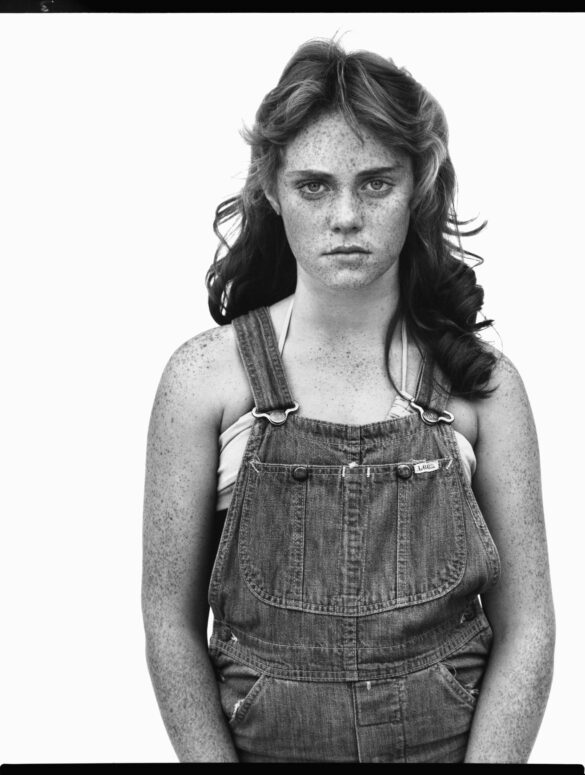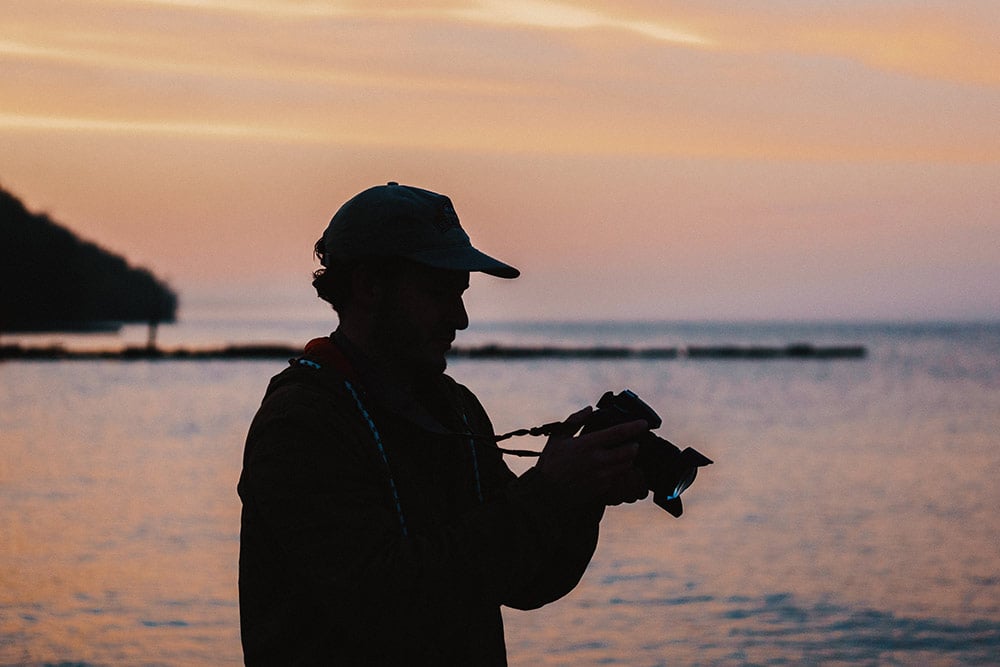To mark the 40th anniversary of In the American West, the Fondation Henri Cartier-Bresson presents the first European exhibition to bring together all 103 portraits by Richard Avedon (1923-2004). Contrary to clichés, this monumental series offers a poignant and unprecedented vision of the American West, to be discovered until October 12, 2025.
Sommaire
Capturing the times, between light and shadow
Born in New York in 1923, Richard Avedon established himself as a master of fashion photography, his talent establishing him as the photographer of choice for Vogue and Harper’s Bazaar.
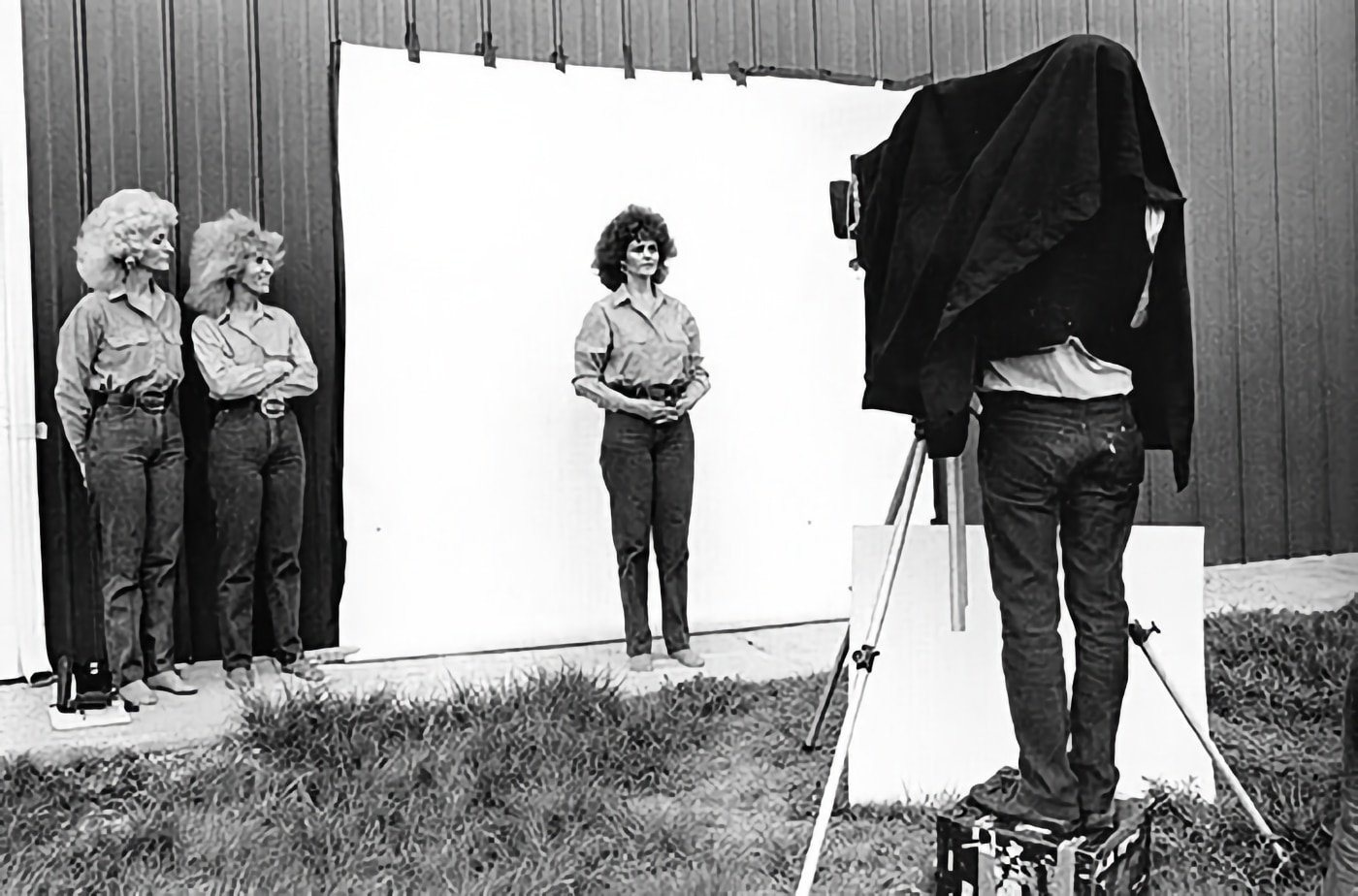
At the dawn of the 80s, Richard Avedon was at the peak of his career. His own portrait appeared on the cover of Newsweek (a rare honor for a photographer). The character played by Fred Astaire in Funny Face, alongside Audrey Hepburn, was freely inspired by him. At the time, Richard Avedon was THE American photographer par excellence, his camera serving as a mirror in which the most beautiful women and artists of the day could see themselves.
Yet Avedon regularly left the comfort of the studio to hit the road. Like a breath of fresh air, these escapes enabled him to pursue a long-term commitment to painting another portrait: that of the United States, and its political, social and cultural issues. From portraits of the American Establishment(The Family), to the Napalm victims of Saigon, to the faces of civil rights activists, Richard Avedon never ceased to translate the tensions of his time into images.
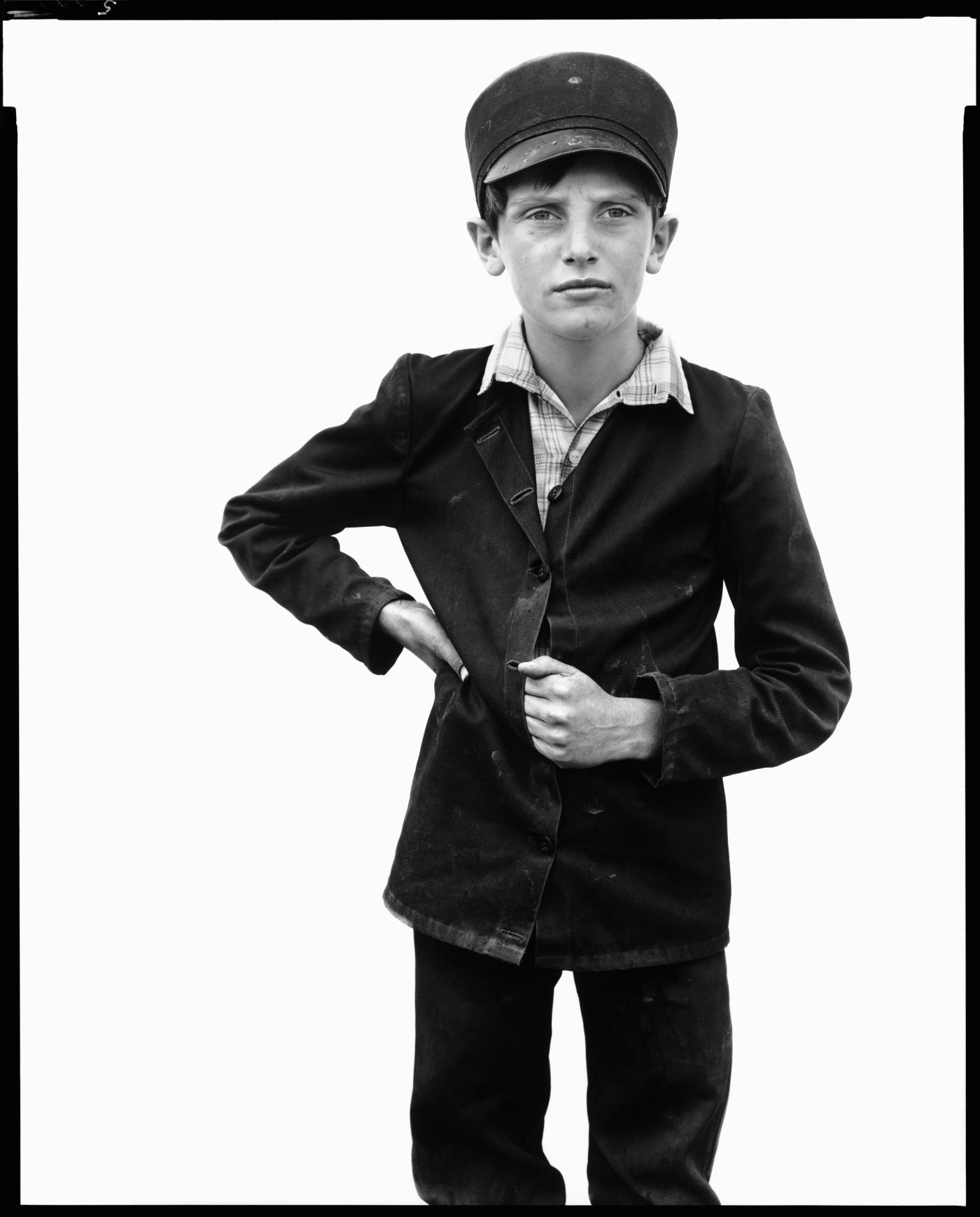
A monumental project that goes against the grain of the Midwest myth
Between 1979 and 1984, at the request of theAmon Carter Museum of American Art (Forth Worth – Texas), Richard Avedon traveled the Western United States, far from the studio lights. He was accompanied by two assistants and Laura Wilson , who coordinated the posing sessions.
Made in the heart of the Republican era, at the height of the recession, the series bears witness to deindustrialization and theaggressiveness of Reagan’s neoliberal policies towards workers and the working classes. Santa Fe, El Mason, San Antonio, Arizona’s Navajo Reservation… The team travelled for 5 years, scouring local festivals for the encounters that would inspire the photographer.
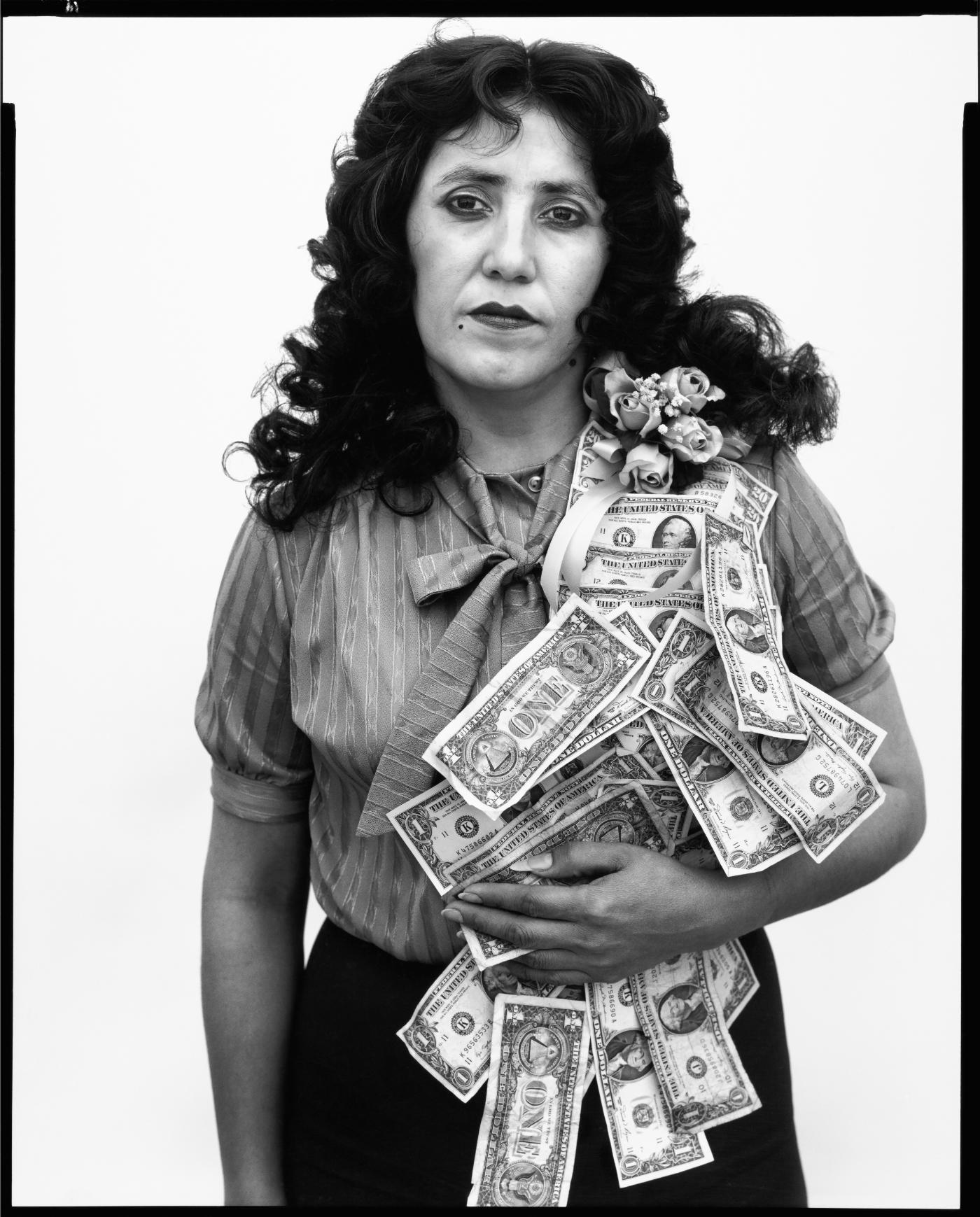
Livestock farmers, miners, drilling workers, cowboys, showmen, waitresses, homeless people, as well as prisoners and hospital patients: they all passed in front of the large-format camera (20 x 25cm negative), adding to the kilos of material transported.
Nearlya thousand portraits were taken for this project, but only 110 photographs were shown. All are now on display at the Henri Cartier-Bresson Foundation.
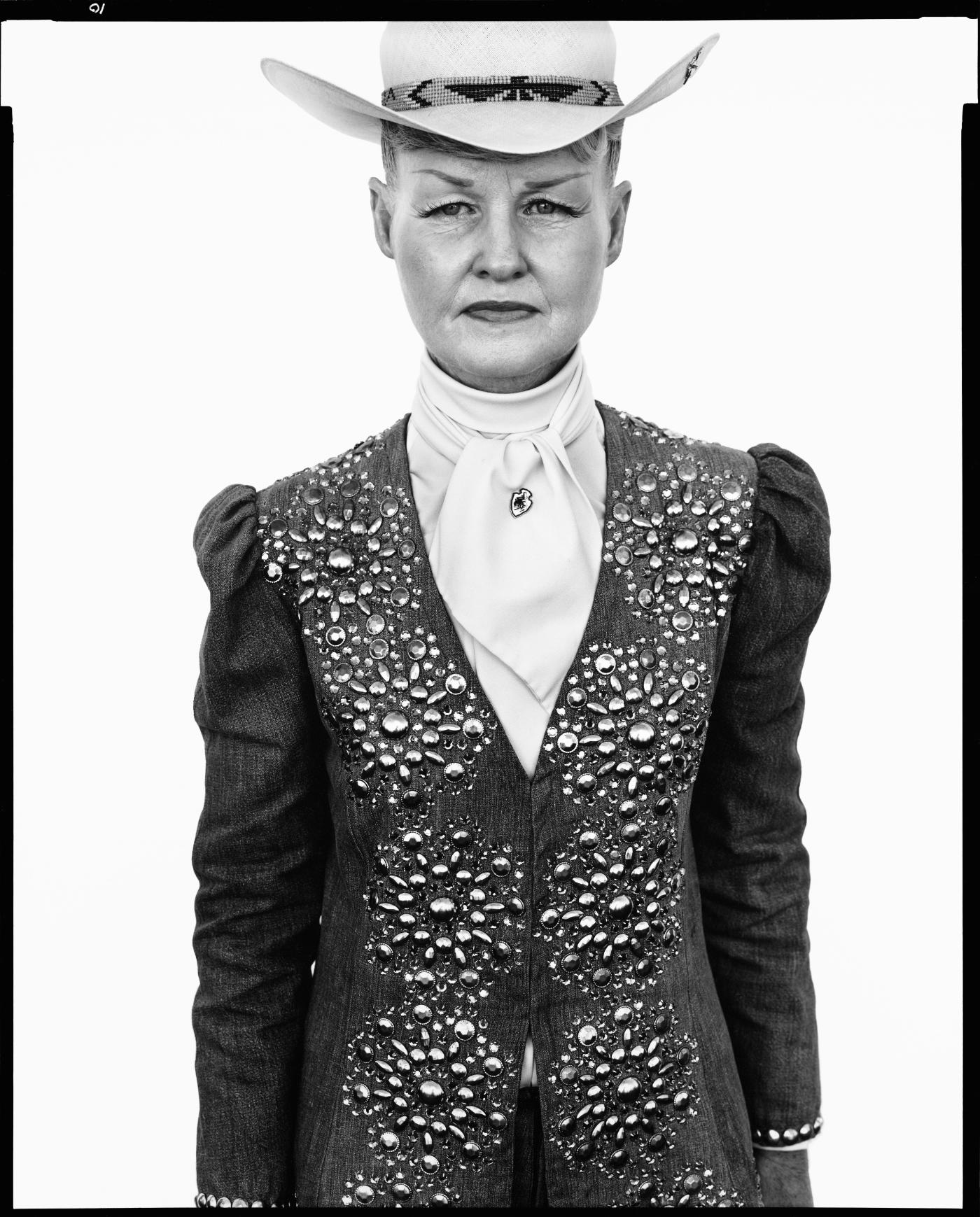
A series draped in simplicity and dignity
In 1942, Richard Avedon joined the Merchant Navy to take identification portraits of sailors armed with his Leica. For In The American West, he drew inspiration from these rudimentary images , like the small portraits taken by itinerant photographers at the time of the conquest of the West.
Photographed from the front against a white background, the subjects are captured outdoors in natural light. Simple white canvases stretched against a barn or farmhouse serve as an itinerant open-air photo studio.
I avoided artificial light. The whole series is lit from the West.
Stripped of all decor and folklore, these faces and silhouettes tell theother side of the American myth. In contrast to the heroic imagery of the Great West, Richard Avedon captures the fatigue and harshness, but also the gentleness and dignity, of those who live off the land and their labor.
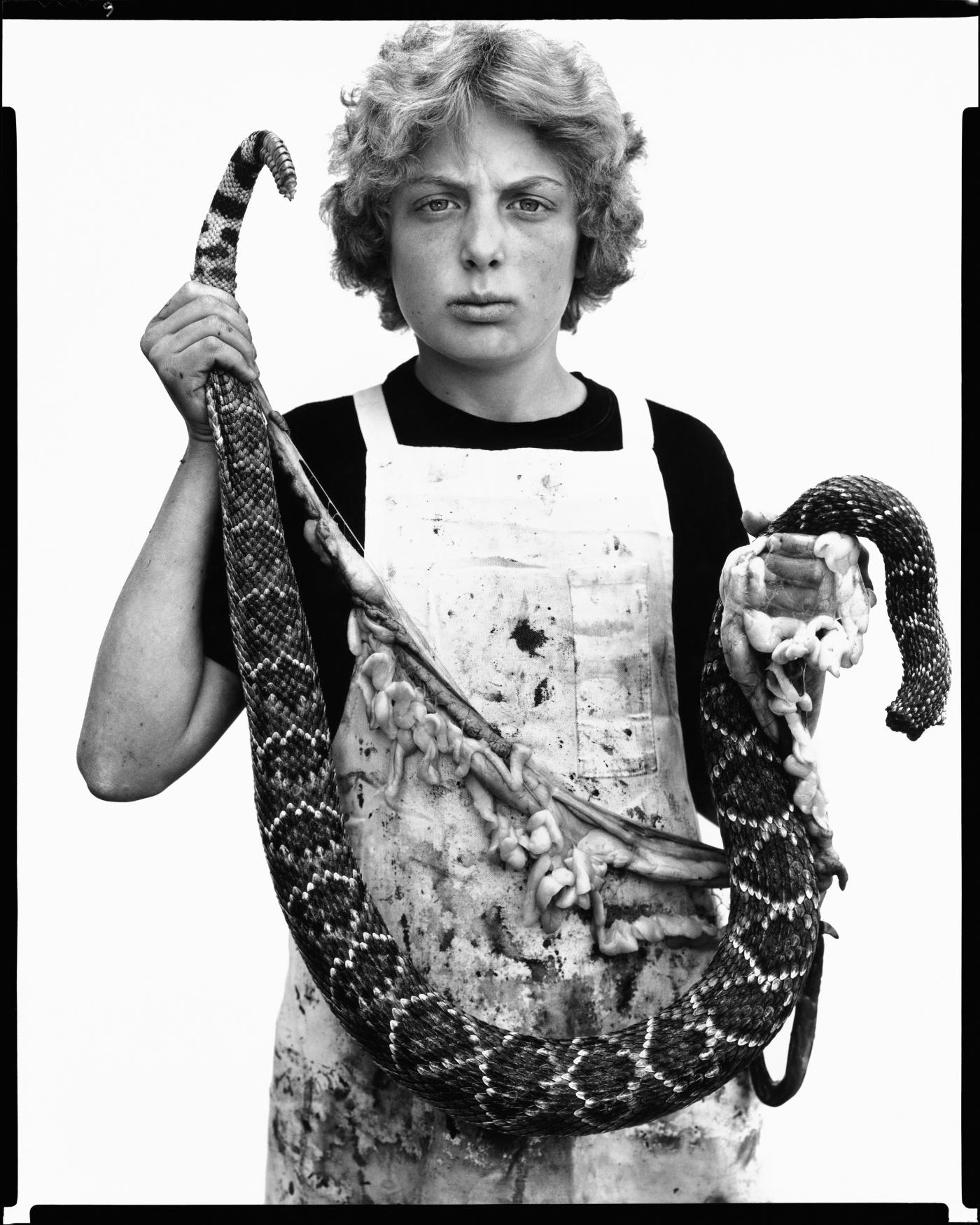
Behind this apparent simplicity lies an extremely complex work process. Five years of shooting are followed by two years of production and development, spreading the project over almost ten years. This purity reinforces the intimacy of the face-to-face encounter: between model and photographer, but also between these portraits and the viewer’s gaze.
Look at an Avedon photograph: you’ll see in action the paradox of all great art of great breed.
Roland Barthes
The 103 images chosen for the book and the exhibition at the time (110 shots if we consider the diptychs and triptychs in the series) will be printed in 5 different sizes, from the small ones presented at the Henri Cartier-Bresson foundation to the large 120×94 cm formats exhibited at the time (as well as in 2008 at the Jeu de Paume, for a selection of images) and up to 2 m high for a dozen prints.
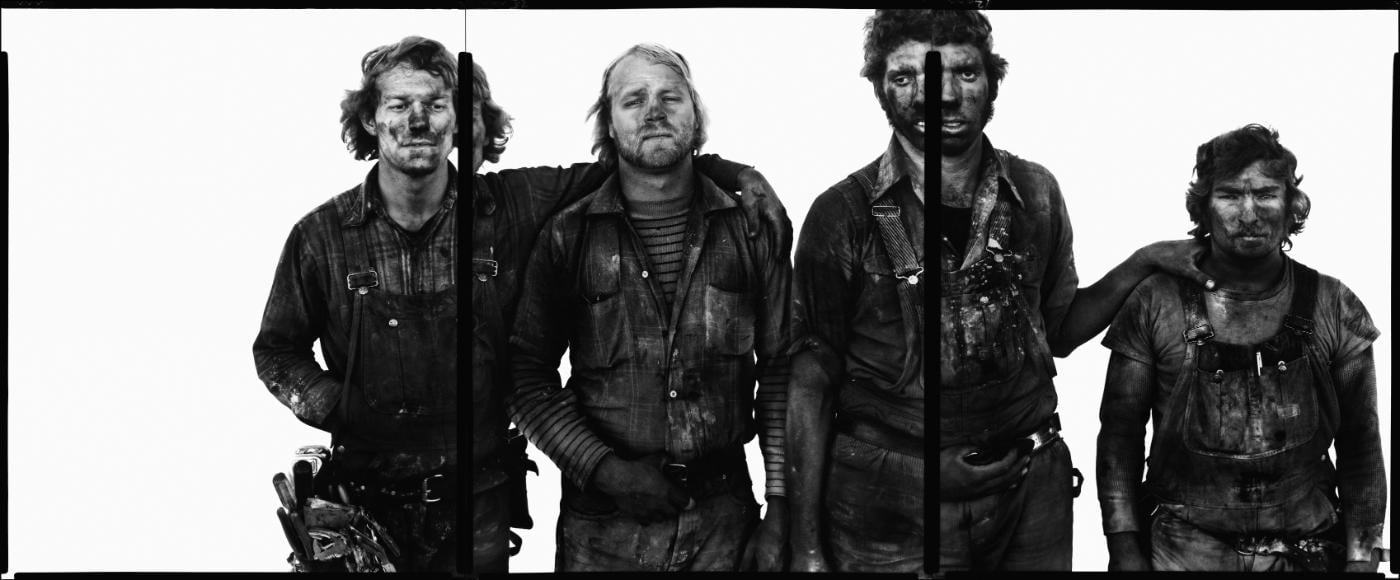
A fictional documentary
In The American West is not a documentary, nor is it intended to follow in the footsteps of Dorothea Lange. Its strength lies in the break with the codes of reportage and social documentary. This project is the result of a subjective point of view, that of Richard Avedon on thestate of the United States. The artist goes so far as to speak of fiction in presenting this unique body of work, which goes beyond the framework of a photographic commission.
This fictional character is further underlined by a number of fabricated portraits, including one that has become mythical : that of the beekeeper. The image was entirely staged following a dream by Richard Avedon, who made preparatory sketches and, with the help of a classified ad in theAmerican Bee Journal, searched for the ideal model to reproduce the image forged in his mind.
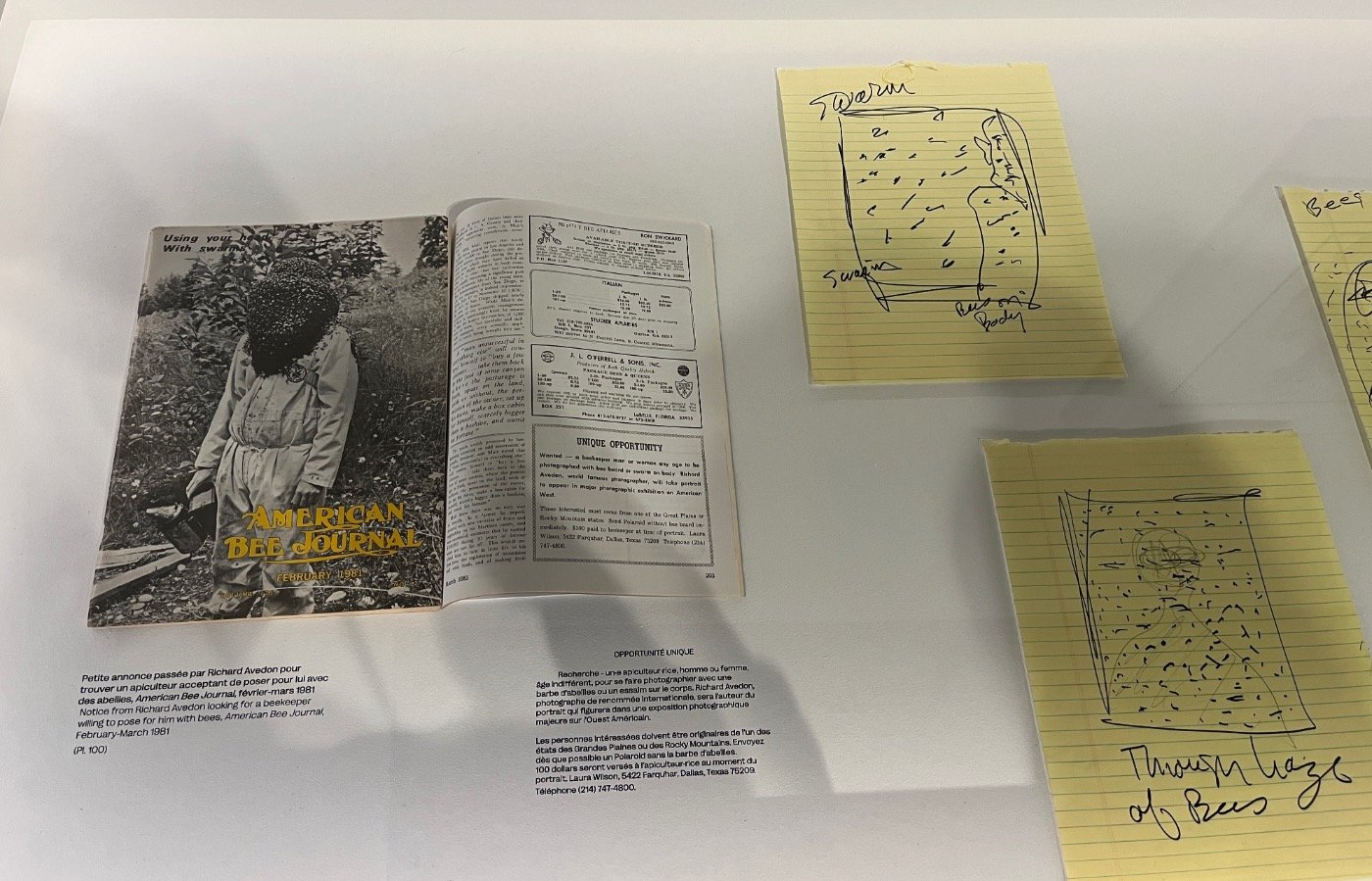
A conductor of his own composition, Richard Avedon was able to weave an unparalleled fusional relationship with his models, while implacably directing them through his gaze, gestures or voice.
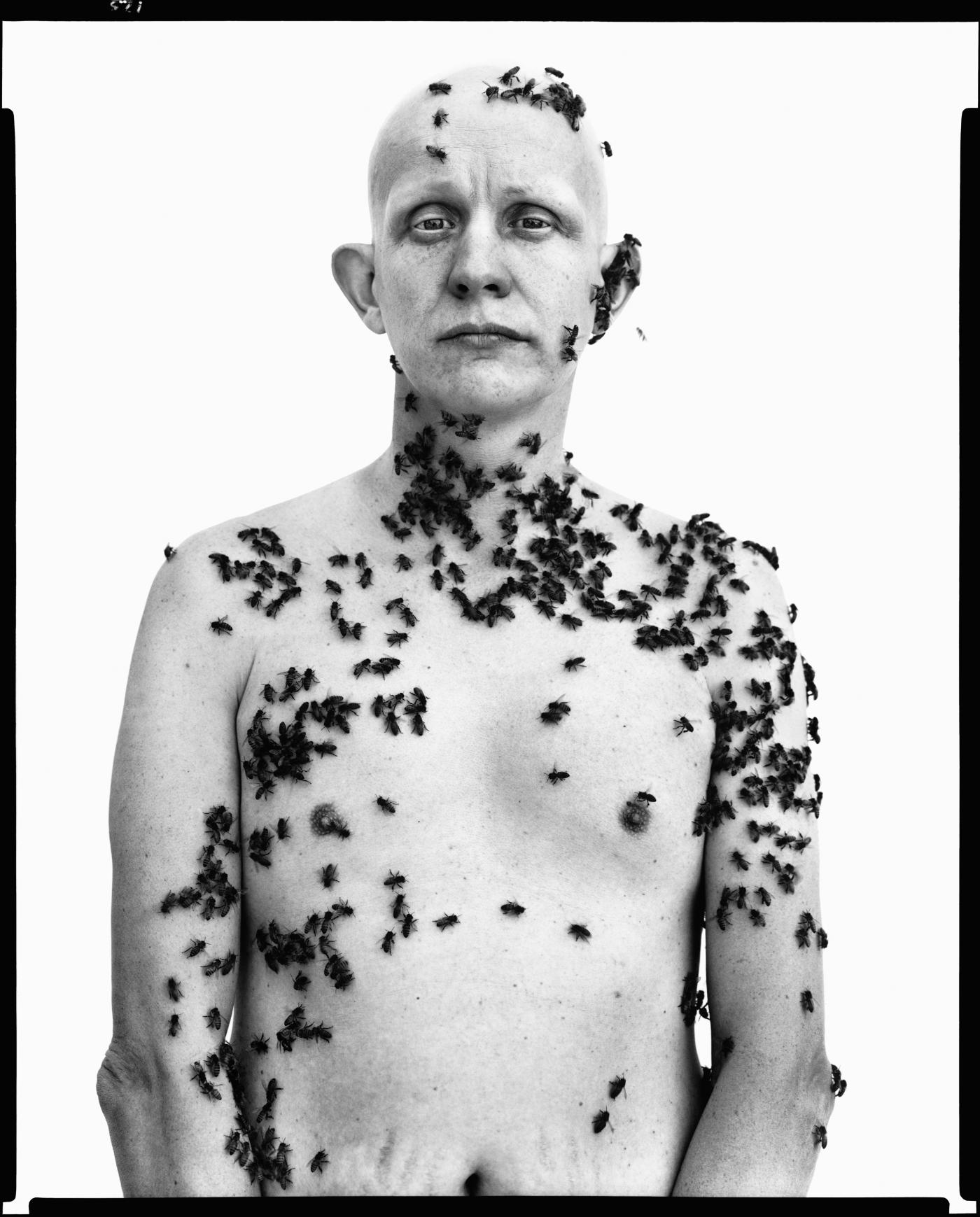
A visit to the rhythm of reading
Forty years after its publication, In the American West returns to us thanks to the collaboration of the Henri Cartier-Bresson Foundation and the Richard Avedon Foundation.
Rare archival documents shed light on the genesis and reception of the project. Silver gelatin prints and the first edition of the book are exhibited alongside preparatory Polaroids and test prints annotated by Richard Avedon. Letters exchanged between the photographer and his models, sometimes several years after their meeting, testify to the depth of the bonds established.
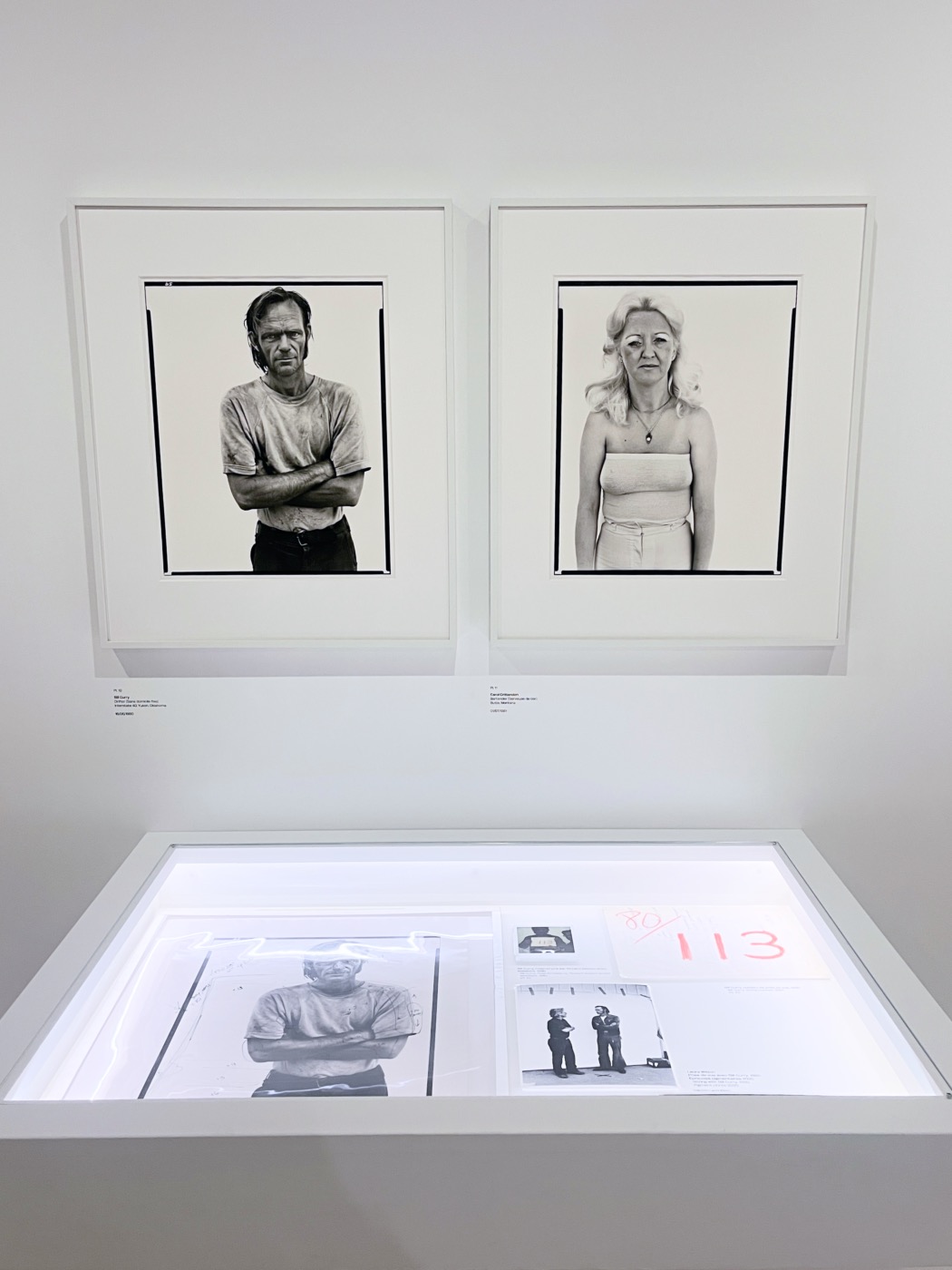
It was the very set of prints on which the photographer worked that was chosen for the exhibition. These reference prints were used to produce the book and subsequent enlargements. For Clément Chéroux (Director of the Henri Cartier-Bresson Foundation), this format establishes a more intimate distance with the public, while placing visitors in the photographer’s footsteps, with Richard Avedon standing beside his lens, shutter release in hand.
This photo exhibition is first and foremost a tribute to the book. The rhythm of the display was dictated by the monograph, to preserve its spontaneity and authenticity. Scrupulous respect for theorder in which the portraits appear , but also for the breathing space. A blank page is materialized by an empty space, and a double page by prints placed side by side. On the wall, Richard Avedon’s prints seem to dance around their visitor.
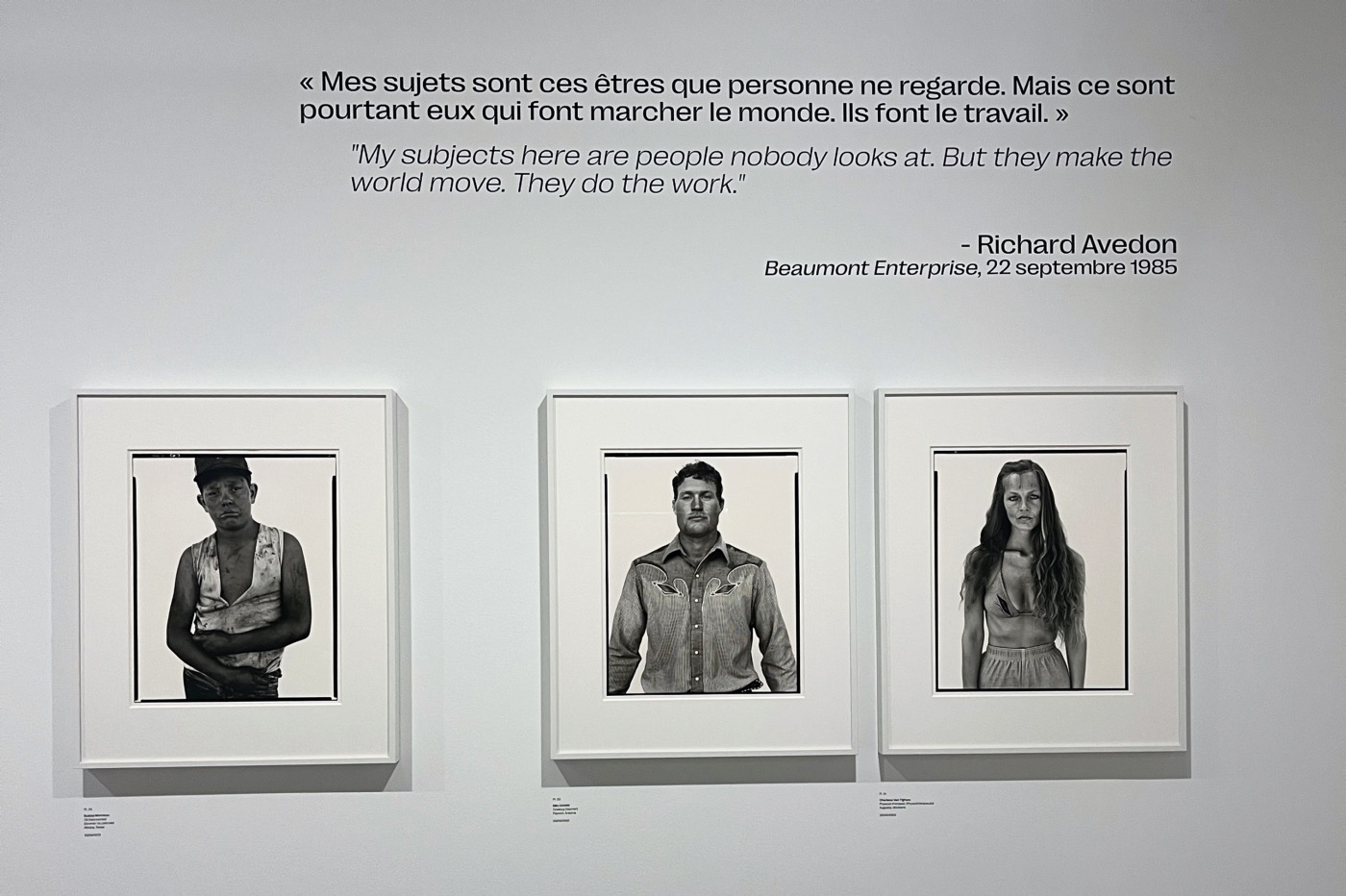
A cult book reissued
Richard Avedon’s monograph, published in 1985, marked a milestone in portrait photography. By avoiding both idealization and miserabilism, he succeeded in making each portrait a sincere and complex reflection of his vision of a person.
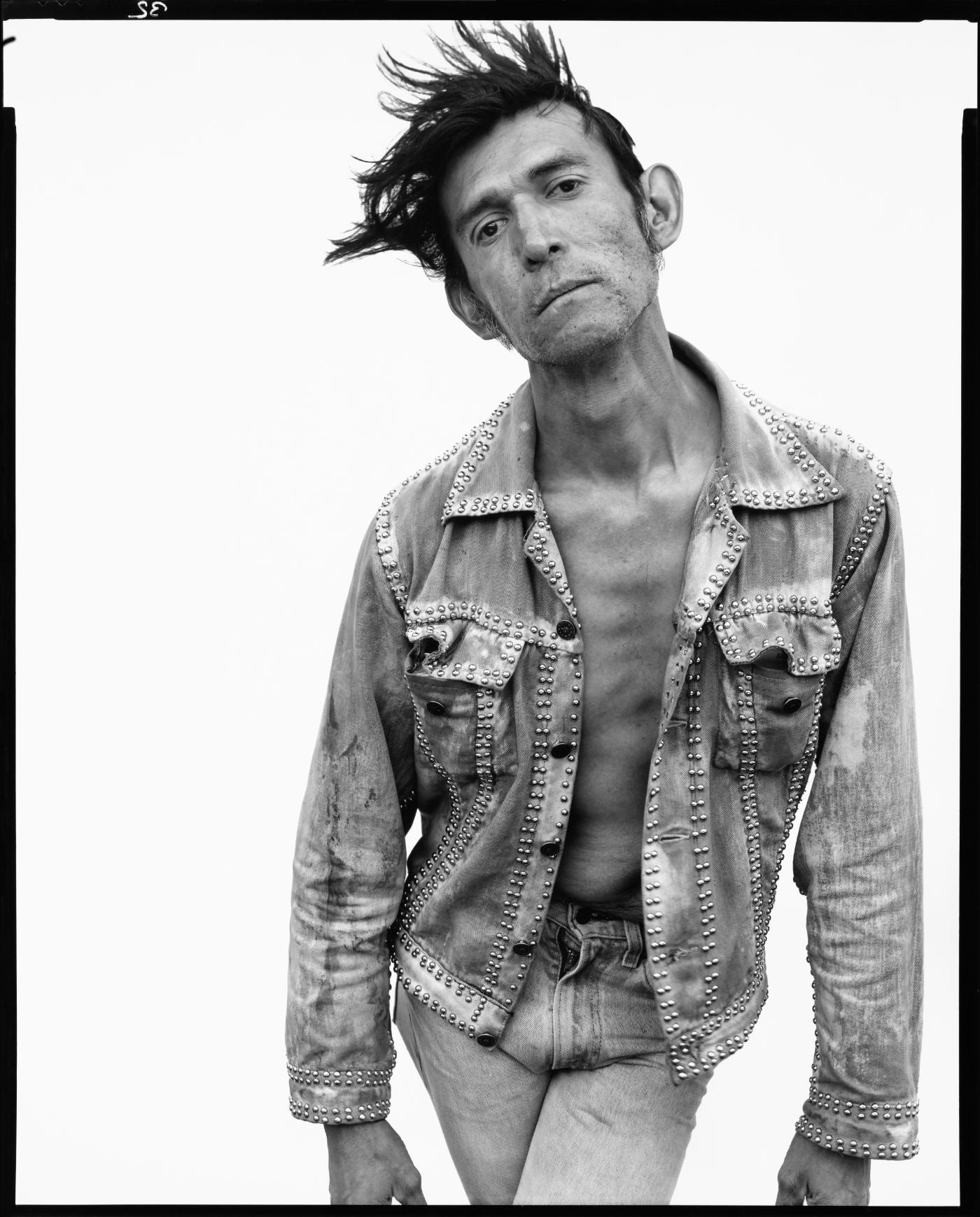
To accompany this retrospective event, publisher Abrams is reissuing In the American West in its original format, long out of print. A rare English-language publication that extends this immersion in a multifaceted America.
Scheduled to hit bookstores in September 2025, the book is already available exclusively from the Henri Cartier-Bresson Foundation bookshop (€120).
Practical information:
Richard Avedon, In the American West
From April 30 to October 12, 2025
Henri Cartier-Bresson Foundation
79 Rue des Archives, 75003 Paris
Tuesday to Sunday, 11 a.m. to 7 p.m.
Full price: €10

